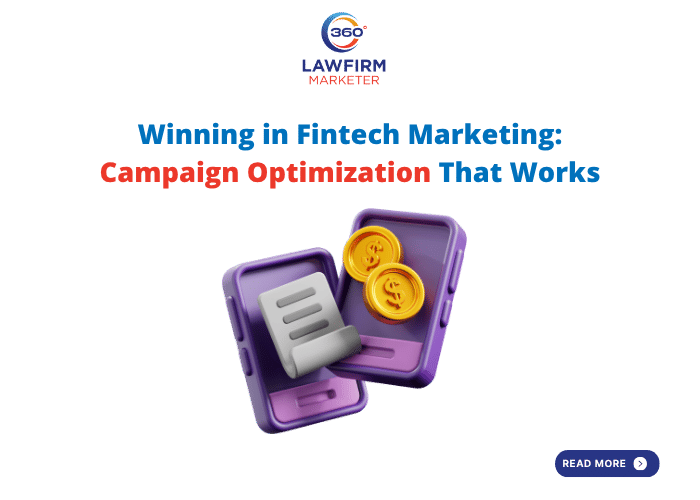
A client’s relationship with your firm is more complex and multilayered than ever. Chances are that before they sign a contract with you, they’ve been exposed to social media, website content, thought leadership, possibly campaigns such as email or paid promotions, and more. There’s no doubt that integrated marketing is more effective than traditional methods from the past – but it can pose challenges too. Which channel actually contributed to the prospect’s conversion? And how much did each channel help? Keep reading to learn more about solving the challenges of marketing for attorneys with marketing attribution.
What is Marketing Attribution?
Marketing attribution is a process designed to determine which marketing channels lead to client conversion, and then assign a specific percentage of attribution to each contributing touchpoint.
The real value of marketing attribution reporting is that it helps you understand trends and the journey that someone takes from the first time they visit your website to the time they become a client. By understanding which campaigns and methods are helping leads to convert, marketers can optimize strategies and better allocate budgets and resources. The more channels you rely on when marketing for attorneys, the more important marketing attribution becomes.
Legal marketers can generate marketing attribution model reports in Google Analytics for free or right in HubSpot if you’re paying for a marketing professional plan.
Below we dive into the different types of one-touch and multi-touch attribution modeling and how they can be used to improve marketing for attorneys.
7 Effective Marketing Attribution Models
There are many different ways to track marketing attribution, and there’s not really a right or wrong way – just what’s right for your firm. According to some research, it takes between 6 and 8 touch points to even generate a lead in the first place – so you can see how things might get complicated pretty quickly. Using the right model will help streamline things for your marketing team, but each model has its own positive traits as well as shortcomings. Do some research and put some thought into the model that works best for your firm.
One-touch Attribution Models
These models attribute an entire conversion to a single channel. There are two primary ways of doing this: a first-touch model, and a last-touch model.
- First-touch Attribution – A first-touch attribution model gives all credit to the first touchpoint that leads a prospect to an eventual conversion. First-touch attribution helps you identify which top-of-the-funnel marketing channels are most effective at locating and capturing the attention of prospects.
- Last-touch Attribution – A last-touch attribution model gives all of the credit to the final touchpoint the lead interacted with. This model disregards the channels a prospect interacts with during the early and middle stages of their journey.
Though these models are simple and provide a very clear indication of which top-of-funnel campaigns work best, as well as which bottom-of-funnel tactics help to push a lead over the goal line, they certainly don’t paint a clear picture of a client’s entire journey. They simply provide a snapshot of the single portion of the journey that leads to a conversion. Generally, these models are a good place to start if you’re just beginning to track marketing attribution, but they don’t provide comprehensive insights.
Multi-touch Attribution Models
In these models, credit is given to any channel or content that a prospect comes in contact with before converting. They have become more prevalent in today’s complex digital landscape, as marketers understand the complex journey clients take toward becoming a lead and creating a relationship. For instance, a client may have read a few blog posts, downloaded a checklist, and attended a webinar before contacting you. If you want to better capture all of the tactics that contributed to a conversion, try one of these models:
- Linear Attribution – This model assigns equal credit to every touchpoint in a prospect’s journey to conversion. These models help marketers understand which channels were effective in reaching a lead, but don’t account for which of those were more influential.
- Time-decay Attribution – This model gives credit to all touch points but weighs the most recent touchpoints more heavily. It’s particularly helpful for firms with longer sales cycles like the B2B market, where the most recent touchpoints might make more of a difference.
- U-shaped Attribution – This model gives 40% of the credit to both the first and last touchpoints that lead to a conversion. The other 20% is divided among the touch points. This model is great because it gives credit to those key first and last touch points, without ignoring the importance of the other tactics along the way.
- W-shaped Attribution – This model gives 30% of the credit to the first touchpoint, 30% to the interaction that created the contact, and 30% to the last touchpoint. Then it gives the remaining 10% evenly across all interactions between the first interaction and the last interaction before becoming a client.
- Custom Attribution – The most sophisticated- but also likely the most realistic – these models are created to be unique to your firm and the way it operates. Tools like Google Analytics allow marketers to assign a custom attribution to any touchpoint that leads to an eventual conversion. To leverage this model, you need a more in-depth understanding of your clients and their behavior. You can start by digging into historical data to determine trends and understand which channels tend to have more of an effect on your conversions.





